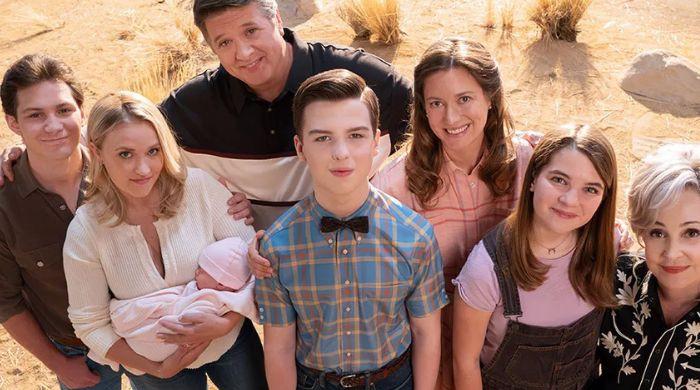Several pieces were made by slathering various kinds of clay — including kaolin, a soft white substance used for porcelain — on canvases or wooden panels. These painting-like objects are defined by crags, fractures and subtle color shifts. One appears to be merely a large hanging sheet, draped and creased. Only close inspection reveals that its surface is covered with patterns made by dried, cracked kaolin.
A few of Koh’s creations recall traditional building materials such as terra-cotta tiles, while others derive from natural forms. Nests of stoneware curls in tan, white or greenish blue evoke vines and tendrils (and recall the work of another masterly local ceramicist, Laurel Lukaszewski). Two pieces array concentric ovals or circles made of stoneware that looks as thin and fragile as skin. Inside one is a mix of glass and resin that simulates water, which is as essential to pottery as clay. The glistening green depths suggest another thing that’s full of water: the human body.
Ara Koh: Grounding; Grounded; Ground Through Dec. 2 at Hamiltonian Artists, 1353 U St. NW. hamiltonianartists.org. 202-332-1116.
Amy Kaslow Gallery often exhibits Indigenous crafts, but its current show takes a more complicated approach to traditional goods-making. Most of the 13 contributors to “Staking Claim: Native American Artists on Identity & Place” meld elements of their threatened cultures with Euro-American techniques. The show overlaps with the National Gallery of Art’s “The Land Carries Our Ancestors,” sharing Muscogee-Creek painter George Alexander (also known as Ofuskie). He uses an expressionist style to paint a bare-chested man on horseback who appears timeless save for one detail: He wears an astronaut’s helmet.
Seminole artist Tony Tiger employs traditional elements but combines them in a contemporary manner, layering colorful textile designs over old photographs of Native people. Another collagist, Montana Blackfoot artist Terrance Guardipee, assembles maps, photos, ID cards and vintage financial documents, placing them on wooden triangles or skateboard decks — a form of transportation somewhere between the horse and the spaceship. Hopi artist Larsen Harris Jr. uses traditional knife whittling to make kachina dolls, representations of spirit beings he embellishes with feathers and plant fibers.
Such potters as Jerome Ebelackerand Sharon Naranjo Garcia (both heirs to Santa Clara Pueblo’s ceramics practice) and Cavan Gonzales (whose Tewa name is Tse-Whang) produce vessels with elegant curves and iridescent dark finishes. Ira Lujan (Taos/Ohkay Owingeh Pueblo) uses an old-world art — glass-blowing — to produce solid-glass antlers that he pairs with gnarled found wood. Simultaneously rustic and sophisticated, these sculptural collages are traditional in spirit if not method.
Staking Claim: Native American Artists on Identity & Place Through Dec. 3 at Amy Kaslow Gallery, 7920 Norfolk Ave., Bethesda. amykaslowgallery.com.
Literally as well as figuratively layered, Elaine Florimonte’s abstracted landscapes are built like the Earth itself: bit by bit, but with epic results. The pictures in her Touchstone Gallery show, “Lost and Found,” have a sense of both immediate movement and long-term action. Their cinematic compositions impel the eye to rush across land and sea, while offering a sense of the slow accumulation of random particles that gradually become mountains and oceans.
The local artist begins by assembling bits of paper, cutting and pasting maps and a set of bags whose green stripes underlie many of these pictures. Above these fragments she paints waves, rocks and horizon lines. The colorful gestures are echoed or contrasted by loosely sketched pencil lines.
Most sweeping are three large seascapes that suggest the hard surfaces below the fluid, cold-hued water. But the artist also conjures vastness with small artworks presented in sequence, such as the 20-square picture “November Series.” Even when Florimonte crops the view into tightly framed vignettes, she evokes a feeling of a much larger world.
Elaine Florimonte: Lost and Found Through Dec. 3 at Touchstone Gallery, 901 New York Ave. NW. touchstonegallery.com. 202-682-4125.
Impending climate disaster is distilled into a series of toy animals in “Plastic Fantasy,” Julia Wachtel’s show at Von Ammon Co. Painted in a crisp, photorealist style, the babyish creatures might be seen simply as metaphors for commercial banality and fetishized innocence. But each picture of a molded-plastic figurine is stacked vertically above or below a large photo-derived print of a factory, ocean or container ship.
The paintings pick up the color schemes of the prints: A blue elephant is paired with a seascape, and a gray-and-yellow cat perches atop a refinery suffused with yellow and orange fire. The photos are four-color halftones enlarged to varying degrees, so the dots that make up the images are more prominent in some than others. The effect is to make the pictures come into focus at differing vantage points, as if each scene must be evaluated separately.
The toys, meanwhile, are rendered by Wachtel’s brush as precisely as by the machines that made the originals. Manufactured cheaply but uniformly, they may well outlast the animal species they cartoonishly represent.
Julia Wachtel: Plastic Fantasy Through Dec. 2 at Von Ammon Co., 3330 Cady’s Alley NW. vonammon.co. 202-893-9797.
Local poet, activist, artist and filmmaker Roy Utley devised a hybrid peace-symbol and clenched-fist logo that’s featured in several pieces in his Otis Street Arts Project exhibition. But most of “Live! From the Chair” is devoted to words, notably a set of poetic musings from the seat where he received chemotherapy treatments for prostate cancer. Utley died three days after the show’s Oct. 28 opening.
Organized by the artist’s son, Jacob Utley, the survey includes videos as well as “peace fists” executed in cut paper or with thick blobs of white paint on a red background. The most complicated artwork is an all-text schematic diagram, “The Art of Peace,” that stretches horizontally (and historically) from pre-Socratic philosopher Heraclitus to epochal pacifist Mohandas K. Gandhi. Viewers of this amusing, erudite and idiosyncratic document may wish that Utley was still around to discuss it with them.
Roy Utley: Live! From the Chair Through Dec. 2 at Otis Street Arts Project, 3706 Otis St., Mount Rainier. otisstreetarts.org.
Source link




